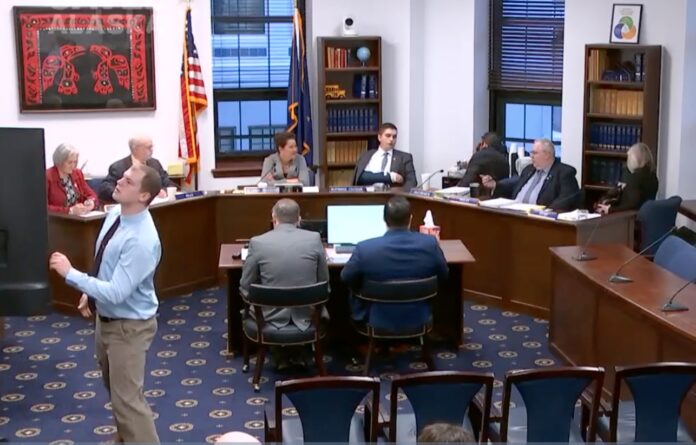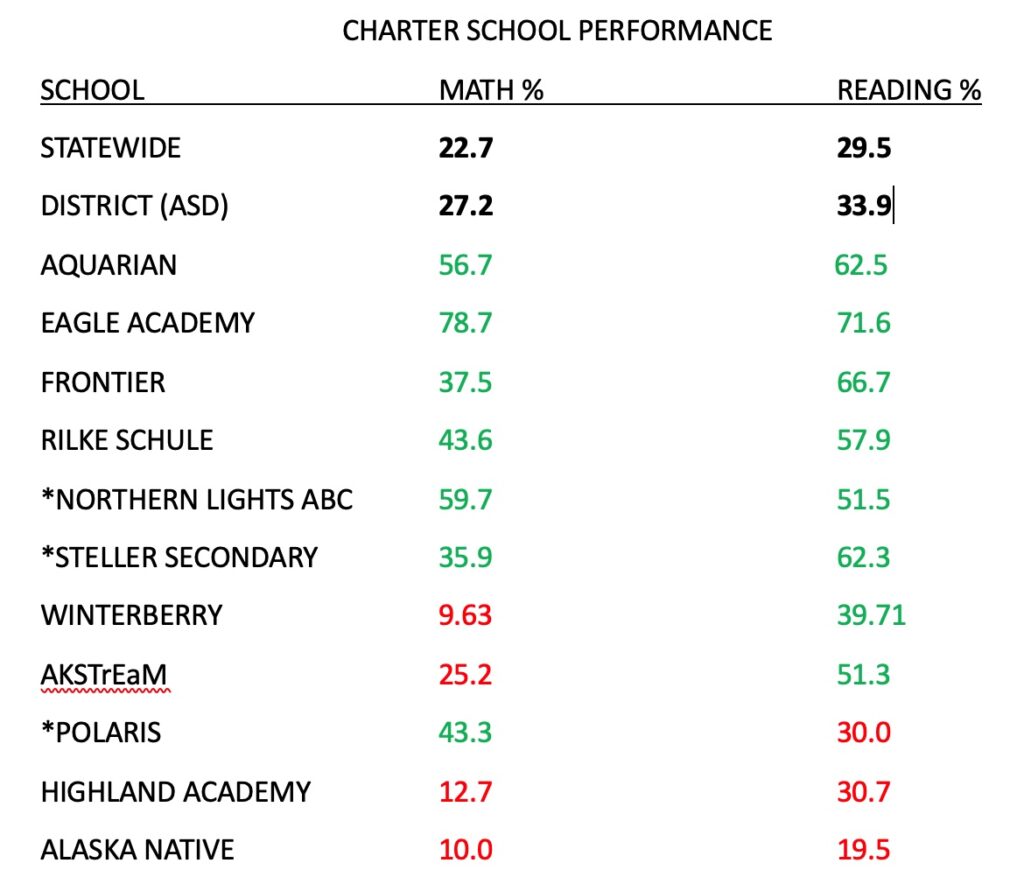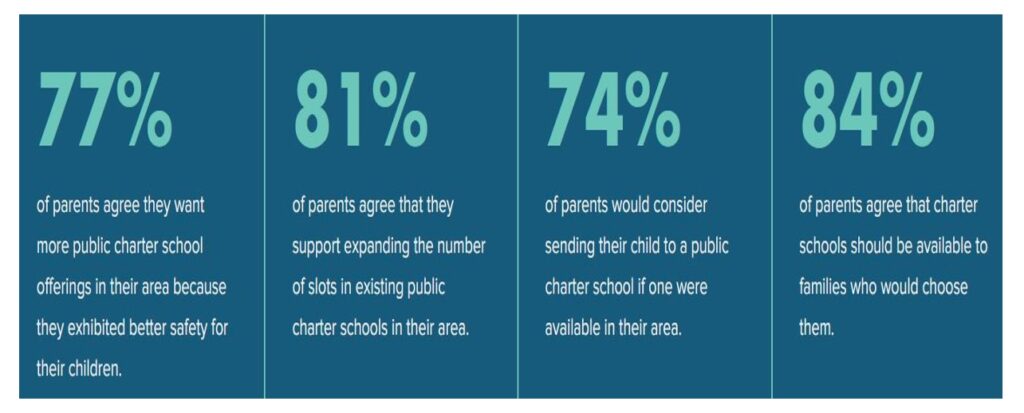
By DAVID BOYLE
One of the most contentious pieces of legislation this year has been Senate Bill 140, a bill chock full of changes in K12 education.
The battle lines have been drawn between the governor and the Education Industry concerning who can start (who may authorize) a charter school.
The governor wants to increase the number of charter schools, which are public schools, by allowing the State Board of Education to authorize them, in addition to the existing districts that are authorizing bodies.
Gov. Mike Dunleavy points to a report from Harvard University that says Alaska has the best charter schools in the nation.
And he is correct.
In the Anchorage School district our charter schools have performed well above the state’s and district’s student achievement. Here is a list of ASD charter schools’ test scores compared to the State and ASD. Scores are for all students in all grades:

The green indicates above district average scores; the red indicates below district average scores.
Northern Lights ABC, Steller Secondary, and Polaris schools are not charter schools but there is strong demand and keen competition for entry from parents. In that regard, they are similar to Anchorage charter schools.
As one can see, the charter schools, excepting one, perform well above the Anchorage neighborhood schools in reading. The Alaska Native Charter School is a Title I school and does perform well above the other Title I schools in the district.
That is why there is, and always has been, a strong demand by parents to enroll their children into these better performing schools.
And that is why there has always been a long wait list for many of these schools.
| School | Waitlist |
| Alaska Native Cultural Charter | 3 |
| Aquarian Charter School | 201 |
| Eagle Academy Charter School | 146 |
| Frontier Charter School | 0 |
| Highland Academy Charter School | 0 |
| Rilke Schule German School | 0 |
| STREAM Charter School | 23 |
| Winterberry Charter School | 154 |
| Northern Lights ABC | 48 |
| Birchwood ABC | 19 |
| Polaris K-12 | 603 |
| Steller Secondary School | 25 |
Parents know which schools perform well and want their children to attend.
They are engaged in their kids’ education.
If the demand is high, why doesn’t the district meet the demand with more charter schools?
For one, the ASD does not make it easy to start a charter school. However, when the district wants to start a new neighborhood school, it merely floats a bond and builds the school.
To start a charter school, parents must form a team with many different talents, write a 100-plus page business plan, find a building, and then get it approved by the school board.
You see, the district has all the power. It sets the criteria for approval and stifles innovation-just what the charter schools are meant to do-innovate. It limits the number of students that can attend a charter school. And it can limit the number of years a charter can exist.
That is exactly why Gov. Dunleavy wants to provide more charter school choice for parents by allowing the State Board of Education to authorize charter schools.
He wants to meet the demand with a supply, just what a private business would do.
The governor wants to loosen the shackles of district control and grow the number of charter schools, so parents have more choice for their kids.
Many other states have multiple charter school authorizers. Only five states, including Alaska, limit authorizers to local school districts. Twenty-nine states allow other entities to authorize charter schools
Guess what? Those 29 states have not lost local control.
And 16 states allow their universities to start charter schools. The University of Alaska could even be an authorizer of its charter schools for employees and staff.
But the Education Industry still yells foul. It cries, “We would lose local control!” That would be code for “losing monopolistic control over education.”
Let’s compare the K-12 monopoly to the current Kroger/Albertson’s grocery store merger.
Twenty-four of our 60 legislators have opposed that merger, crying foul to the Federal Trade Commission.
They said, “We cannot, in good conscience, support the unnecessary cost increases that place barriers on Alaskans’ ability to put food on the table.”
Now let’s reword that phrase in K12 education terms: “We cannot, in good conscience, support the unnecessary costs that place barriers on Alaskan students to achieve their maximum potential.”
Why oppose a private monopoly yet support a public monopoly?
Instead of “local control,” let’s have parental control.
Let’s give parents more choices to educate their children. If there are fewer choices, the K-12 public school system may see parents leaving the system for better education options.
When the Anchorage School Board revoked the charter of the Family Partnership Charter School, more than 750 parents voted with their feet and left the school.
When a school district removes a school’s charter, the parents have no legal recourse to appeal the removal. In theory, a district could approve a charter school and the next year revoke that same charter.
Recently, Larry Persily wrote an op-ed which harshly criticized Gov. Dunleavy’s position on charter schools. He doesn’t seem to know that charter schools are public schools.
He states, “Charter schools pull the most promising students with the most engaged parents out of our schools, further weaking public education.” Mr. Persily, Alaska charter schools are public schools. Parents are clamoring to get their kids into these schools. This is why there are wait lists.
Why would anyone want to keep “the most promising students” down?
Persily further says that charter schools are not required to provide transportation, making it harder for single parents and low-income parents to get their kids to charter schools.
We do agree with Persily on that count. But here’s the rest of the story—school districts get state funding for transporting all students, including the charter students.
The ASD gets $481 per student for transportation. This includes the charter students. But it doesn’t transport the charter students. The district gets $1,108,705 to transport all 2,305 charter students, but leaves them at the bus stop.
That can be fixed by the Legislature and should be fixed. In the name of equity, charter school students should not be discriminated against when it comes to providing transportation.
The Harris Poll conducted a survey of 5,000 parents in 2022. Parents overwhelmingly want their freedom to choose the best education option for their children. That is true across all races, political ideologies, and geographies.
Here is a graphic summary of the poll (source: The National Alliance for Public Charter Schools):

Gov. Dunleavy knows that charter schools perform above their neighborhood counterparts. He is also aware that parents, not K-12 bureaucrats, know what’s the best education fit for their children.
So, let’s meet the demand for more charter schools by allowing the State Board of Education to start/authorize new charter schools.
Let’s allow the University of Alaska system to also authorize its charter schools.
Give parents a choice. Give students a chance to maximize their futures.
It’s past time to break up the school district monopoly over charter schools and provide more charter school options to Alaskan children.
The National Alliance for Public Charter Schools gave a presentation to the House Education Committee on March 11, 2024. Here is a link to learn more.



![Body temperature check, prevent virus Concepts in preventing contagious diseases. Corona virus [Covid-19] . social distancing concept.Operator Check Fever by Digital Thermometer Visitor](https://ak4pf.org/wp-content/uploads/2025/03/business-woman-covid-19-2024-10-18-05-28-48-utc-150x150.jpg)





![Body temperature check, prevent virus Concepts in preventing contagious diseases. Corona virus [Covid-19] . social distancing concept.Operator Check Fever by Digital Thermometer Visitor](https://ak4pf.org/wp-content/uploads/2025/03/business-woman-covid-19-2024-10-18-05-28-48-utc-300x196.jpg)


